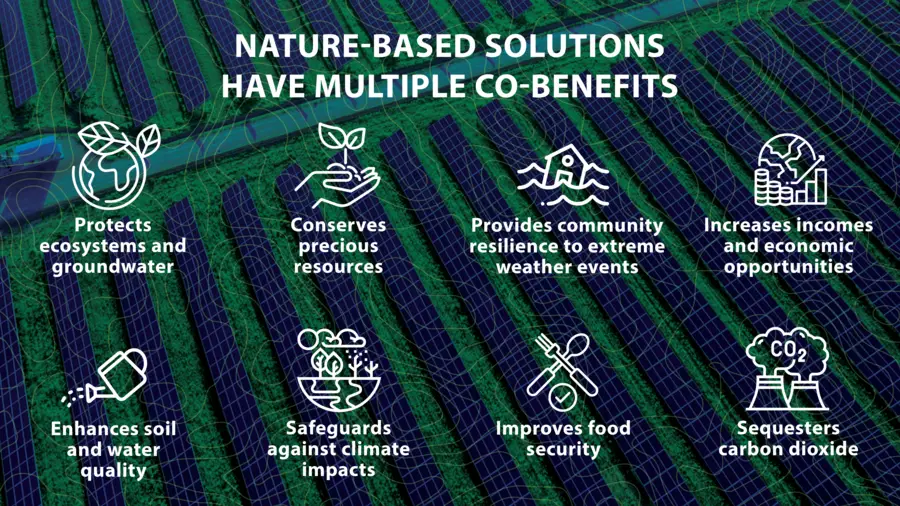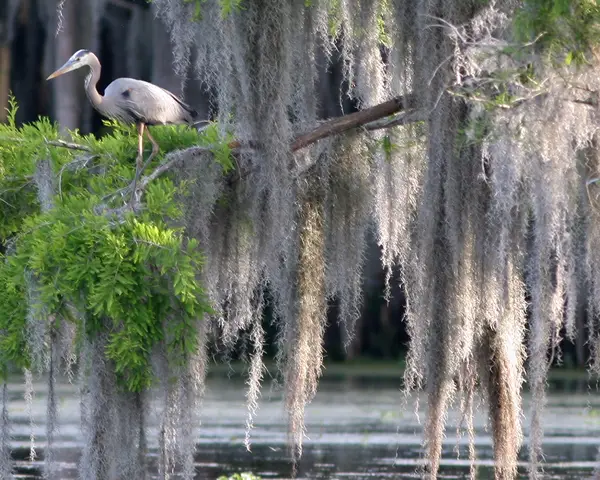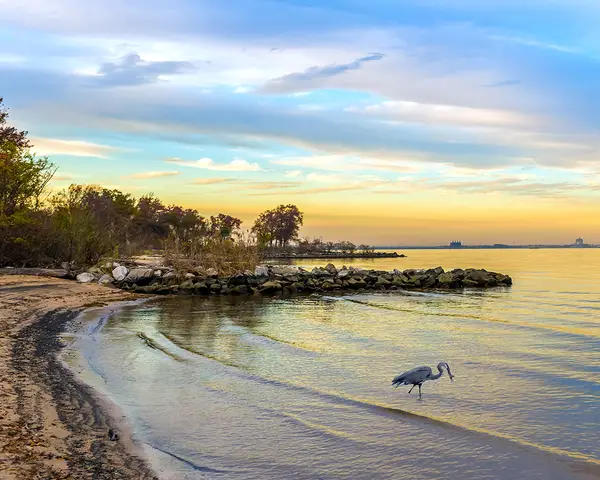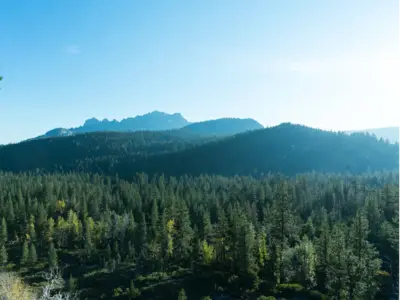Developing innovative solutions under a holistic, nature-based approach that addresses multiple crises
Nature can play a key role in helping us to address and solve complex societal and environmental challenges. Nature-based solutions (NBS) conserve, manage, and restore ecosystems while creating co-benefits, such as promoting sustainable economic growth and recreational opportunities, enhancing communities, and increasing resilience to environmental hazards. Nature-based solutions benefit both society and the natural environment upon which we all depend.
Our Approach to Nature-Based Solutions
By holistically assessing the suitability, feasibility, and effort of implementing nature-based solutions, we support partners in creating lasting societal and environmental benefits while reducing unintended consequences. RTI engages with communities to implement nature-based solutions that protect, restore, and manage ecosystems and their natural functions. Implementing NBS supports the sustainable use of natural resources, ecosystems, and aquatic systems and reduces impacts from current and potential future risks related to environmental hazards.
These collaborations facilitate nature-based actions to address environmental and weather-related challenges including flooding and drought, biodiversity loss, and food security. From regional, state, and watershed level planning to site-specific application and implementation, we tailor our tools and approaches to develop plans for implementing NBS and quantifying the environmental, ecological, and societal benefits.

What we do to support nature-based solutions
- Develop analytic frameworks and models that evaluate and quantify the benefits of NBS approaches to help inform policymakers;
- Employ advanced tools like HydroBID and WaterFALL to accurately model hydrologic and water quality conditions in domestic and international watersheds to develop watershed management plans that can characterize NBS and the impact they have on water-related objectives;
- Estimate NBS potential through geographic suitability assessments that address restoration, preservation, prevention, management, and green infrastructure;
- Implement NBS projects that conserve, manage, and restore ecosystems, protect biodiversity, support economic growth, and help communities adapt to impacts; and
- Create tools that put quantitative analyses in the hands of decision makers and the public, enabling their own evaluation of NBS projects with data that can be used in funding applications.

Modeling the Impact of Urban Tree Cover on Health in Extreme Heat
RTI researchers led a collaborative scientific study to assess the life-saving impact of urban tree cover by reducing temperatures during periods of extreme heat. By applying their model to Baltimore, MD, researchers found that increasing tree cover by just 10 percent could save an additional 83 to 247 lives each year. Persons over age 65, who are especially impacted by heat, would account for over half of the reduced mortality. This quantifiable data can help decision-makers elsewhere develop effective policies for adapting to changing weather patterns.

Flood Resilience and Watershed Management in Louisiana
In collaboration with The Nature Conservancy, we are developing the NBS Explorer for the State of Louisiana to address an urgent and growing need to facilitate decision making about investments in NBS at the watershed scale. The NBS Explorer uses RTI’s Watershed Flow and Allocation (WaterFALL®) modeling to evaluate both primary and co-benefits of NBS implementation. Primary benefits include greater flood resilience. By reducing runoff of excess nitrogen, phosphorus, and sediments, co-benefits include improved water quality and better aquatic habitat for key recreational fish species.

Supporting NBS-Friendly Policies in the Chesapeake Bay Watershed
In partnership with the U.S. Environmental Protection Agency (EPA) and other stakeholders, we developed an analytic framework to help policymakers evaluate and quantify the benefits associated with the goal of reducing pollution loads in water. Focusing on the Chesapeake Bay watershed, the framework provides useful insights into the multiple ecosystem benefits associated with meeting water pollution control targets, including several ancillary societal benefits, such as carbon sequestration, flood protection, and outdoor recreation.













